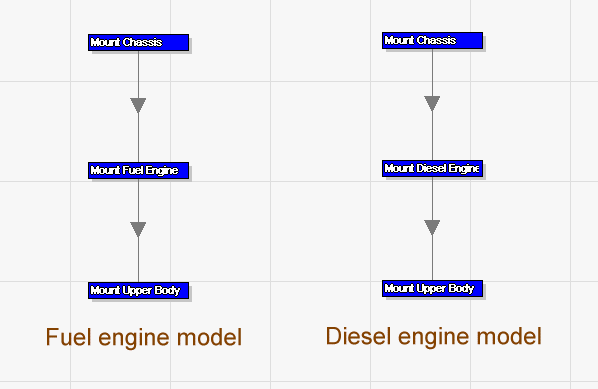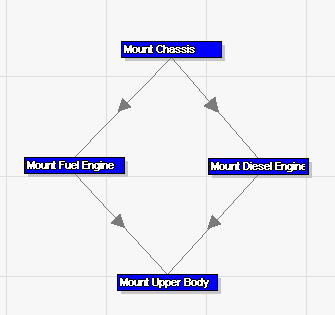|
|
What are variants ? |
|
In today's world, customers demand personalized products. As a result, mass production of identical products becomes rare, giving way to production of smaller quantities of differentiated products. Since it would be far too expensive to set up a separate assembly line for every kind of product being produced, this is more and more often being tackled by assembling several different products on the same line. Most often though, the products are not completely different and share a number of common operations. In those cases, the line is said to produce several variants of the same product. Consider for instance two models of the same car, one with fuel engine and the other with diesel engine. Most of the operations involved in assembling the car are identical in both models, except for the operations related to mounting the engine and related parts. In a rough precedence graph, the two models can be represented as follows: |

Two models of a car
|
Since most of the operations are identical in the two models, the two precedence graphs can be merged into a unique precedence graph for both models. To account for the fact that only one of the two "Mount Engine" operations appears in any of the models, OptiLine represents both of the alternative operations, each being included in just one of the two variants of the car, as in the following figure. |

Two variants of the same car
|
Thus each variant of the product is defined by the presence/absence of operations. The advantage of this representation is that each operation can be defined exactly with one duration and exactly one identifier and description. Since all variants of each operation are represented in the precedence graph, this representation is also extremely flexible in cases with variant-dependent precedence constraints. OptiLine offers two ways of representing variants: the explicit variants model, and the Bill Of Materials (BOM). |